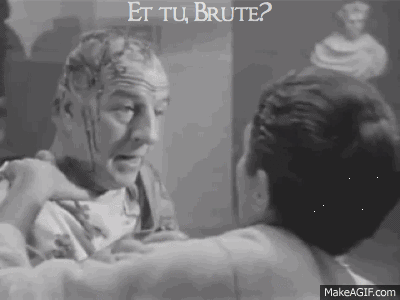 Et tu, Brute, one of the most often used lines, especially on March 15th. Beware the Ides of March, Julius Caesar was warned. Did he listen? Apparently not.
Et tu, Brute, one of the most often used lines, especially on March 15th. Beware the Ides of March, Julius Caesar was warned. Did he listen? Apparently not.
Shakespeare was one of the first creators of historical fiction. He based his plays on events from the past with his own twist on artistic license. His play Julius Caesar being one of his more famous takes on history.
The famed Sir Thomas Malory, author of Le Morte D’Arthur, incorporated the ideals of chivalry and knighthood with the legends and stories of Camelot and the Knights of the Round Table. Whether the life and times of King Arthur are a true part of history or just a figment of the worlds’ imagination, it falls into the category of historical fiction when you look at the references to the times. Some may disagree there.
Along with Shakespeare’s plays and Malory’s famous work, there are many other literary figures from history that would be placed under historical history today. Alexandre Dumas comes to mind as well. Whether you enjoy reading historical fiction or not, you have to admit that the thrill of watching the film adaptations of these novels and plays from our own history are quite fun!
Now, let’s step away from the famous authors and playwrights and look at what historical fiction in.
Historical fiction takes a person or event from history and tells their story with fictionalized elements. One of the owner’s favorite historical authors is Judith Tarr. Among other books she wrote Ars Magica, the story of Gerbert the farmer’s son who became a mathematician and later Pope Sylvester II. About the only thing in the book that is factual is that he was born Gerbert to a humble farmer and became Pope. His relationship with the young Holy Roman Emperor and his penchant for magic is pure speculation on Tarr’s part. Certainly made for some good reading!
 SRP author Philipp J. Kessler is working on his own historical fiction, The Heretic & the Inquisitor. The figure from history is Robert le Bougre, an inquisitor in France in the mid-13th Century. According to the Church he was a heretic of the Waldensian flavor who later recanted his beliefs and became a Dominican monk and inquisitor. That much is true.
SRP author Philipp J. Kessler is working on his own historical fiction, The Heretic & the Inquisitor. The figure from history is Robert le Bougre, an inquisitor in France in the mid-13th Century. According to the Church he was a heretic of the Waldensian flavor who later recanted his beliefs and became a Dominican monk and inquisitor. That much is true.
Kessler is taking that and running with it. Adding in an element of psychology to the story of this person from the Church’s history. Whether any of it might even be considered true is beyond him to say. He is using the modern idea of dissociative identity disorder, formerly known as multiple personality disorder, to explain some of the war being waged on the supposed heretics of the time. Were they mentally ill? Or were they, as the Church claimed, in league with the Devil and possessed by demons? You’ll have to keep an eye out for this release in 2018 to find out how Kessler tells the tale.